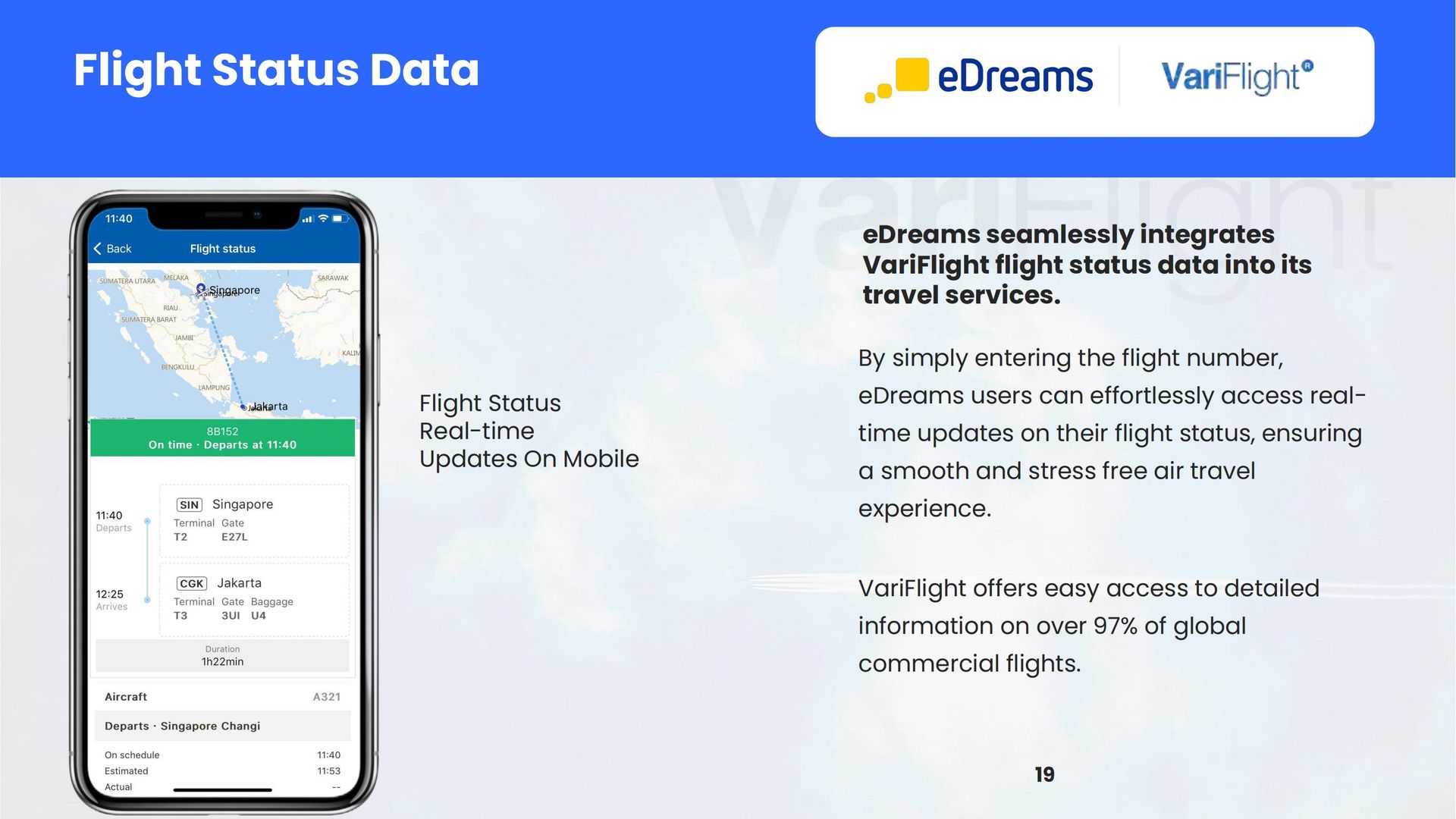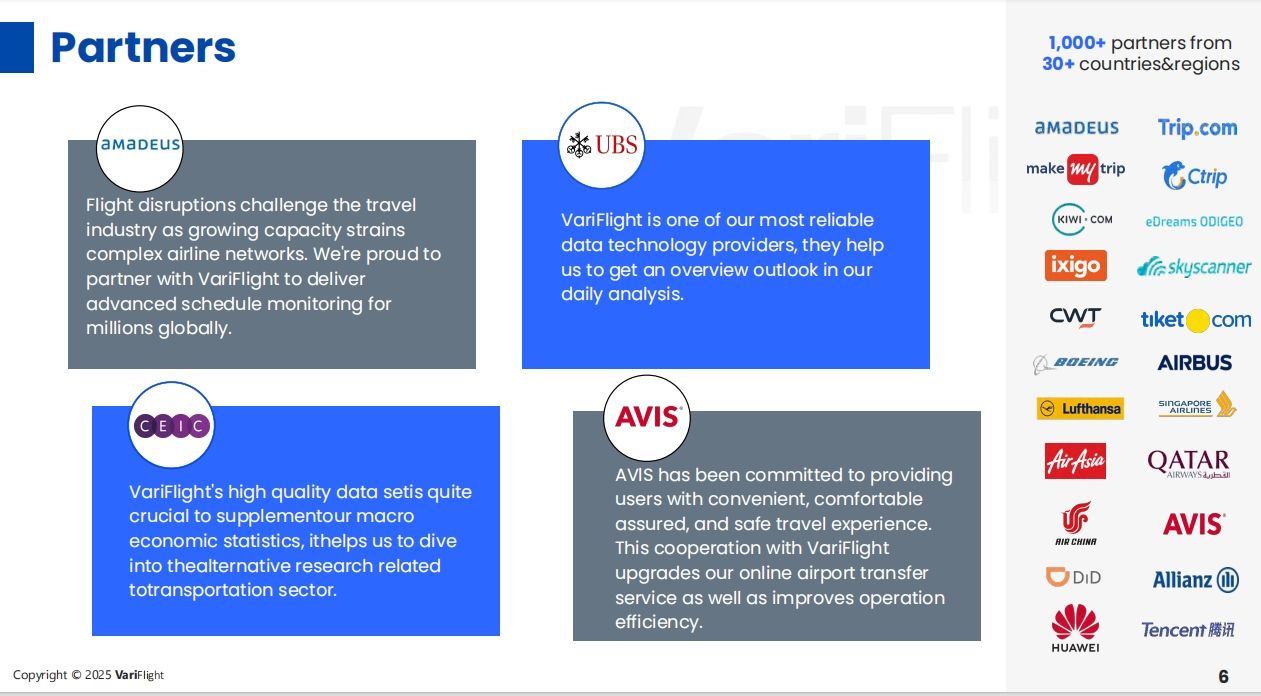VariFlight × eDreams: Making Travel Itinerary Management Easier with Real-Time Flight Data
Today’s travelers expect fast and reliable information. That’s why real-time flight data is so important for travel companies. VariFlight is happy to announce a new partnership with eDreams, a major online travel agency. Our goal is to help eDreams users manage their trips more smoothly and get flight updates when they need them most.
Why Did eDreams Choose VariFlight?
VariFlight delivers real-time data on more than 98% of commercial flights worldwide. We collect information from our own ADS-B network and many other trusted sources. Our flexible API and strong service guarantees (SLA) make it easy for travel companies, airlines, and airports to use our data in their platforms. This means eDreams can rely on the accuracy and speed of the updates we provide.

Partnership Highlight 1: Better Flight Information
**eDreams now uses VariFlight’s flight status API. This means travelers will see:
**Real-time updates on departure and arrival times
**Alerts for delays, cancellations, or changes
**Terminal and gate information

With faster and more accurate updates, travelers know what to expect. eDreams can also keep their support team in the loop, reduce user complaints, and avoid unnecessary manual work.
Partnership Highlight 2: Smarter Trip Management
**Besides flight status, VariFlight offers smart trip management tools. eDreams can now:
**Automatically identify all segments in a traveler’s booking
**Check if connections between flights are reasonable
**Warn users if a tight transfer puts them at risk of missing a flight
**Let users manage all trip details in one place
These features help travelers feel in control. Even on complex journeys, they get the information needed to make good decisions.
How Users Benefit
**This partnership appears throughout the eDreams app:
**Users get personalized updates about their flights
**The system warns support teams when something goes wrong, so they can help quickly
**App users see a clear travel status card for each journey
**These small, clear touches make traveling less stressful and keep users satisfied.
Get 14 days Free Data Trial: Here
Building a Better Future for Travel
The cooperation between VariFlight and eDreams is an example of how technology makes travel better. By combining advanced flight itinerary management and accurate real-time flight data, both companies are helping create a travel experience that is smarter, faster, and more user-friendly.
Learn More about our partners:Here

References
https://data.variflight.com/products/flight-happiness-index
https://data.variflight.com/blog/what-is-flight-happiness-index-and-how-it-improves-the-air-travel-booking-experience
https://www.edreamsodigeo.com/
https://skift.com/2023/03/07/why-otas-are-betting-on-real-time-flight-data/
https://www.phocuswire.com/digital-travel-itinerary-management
